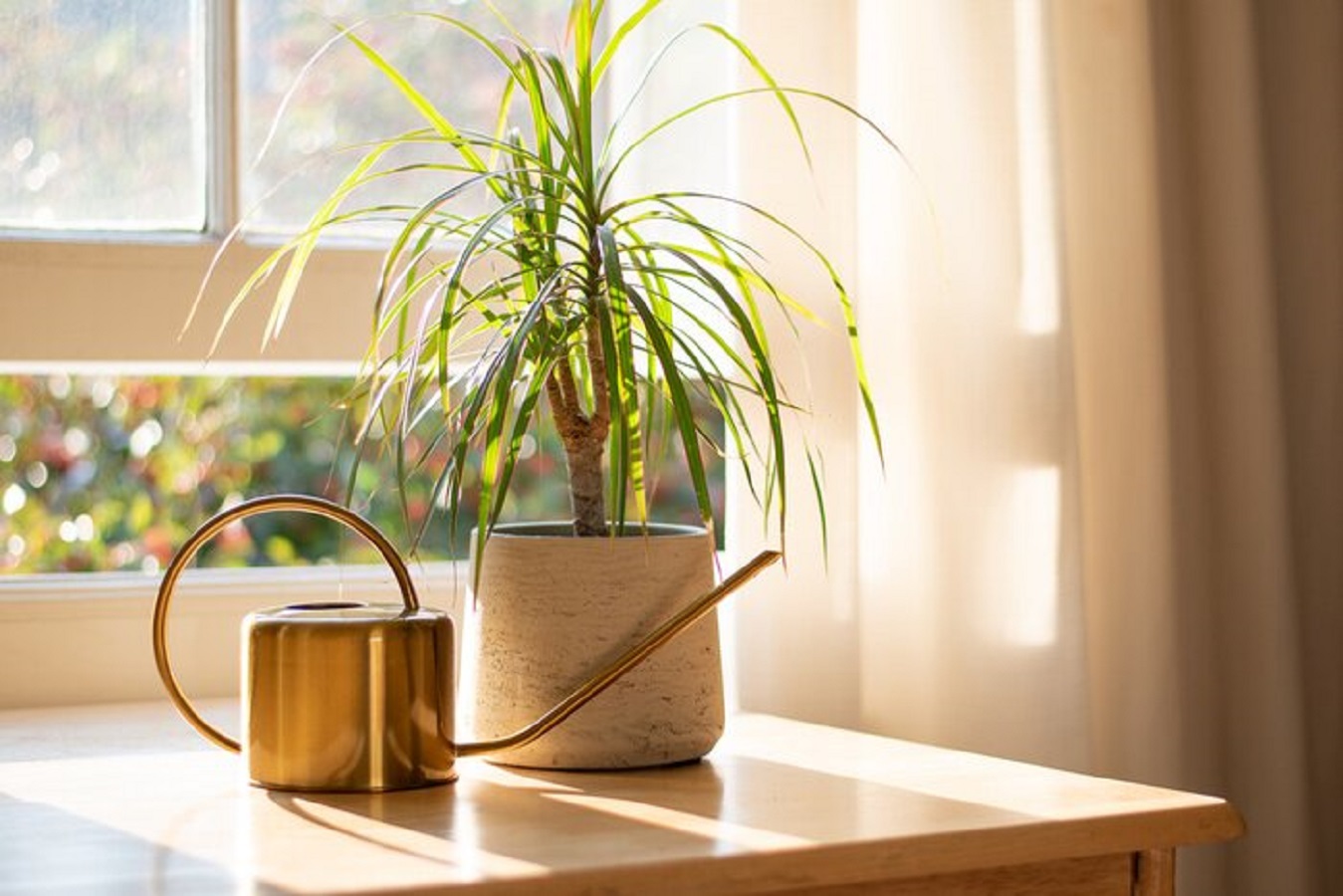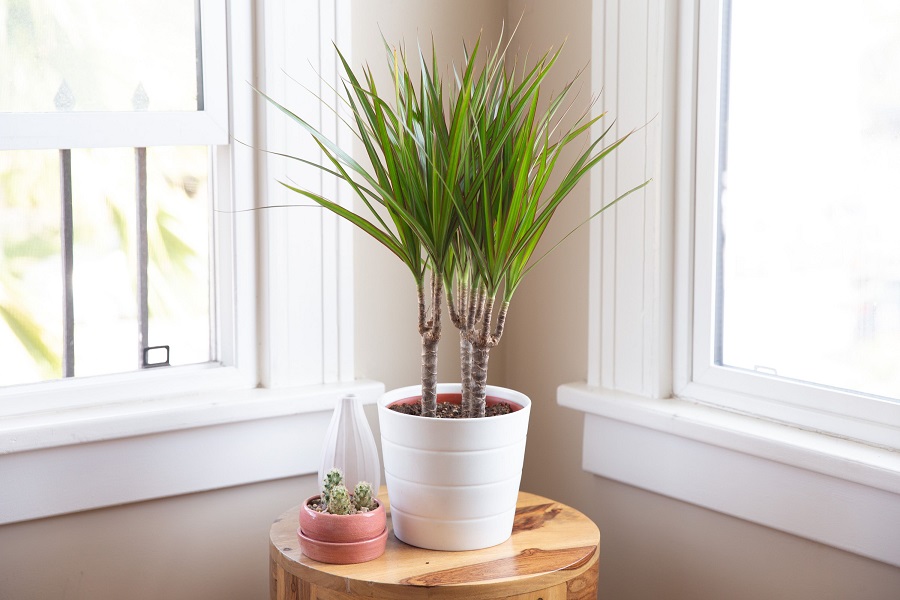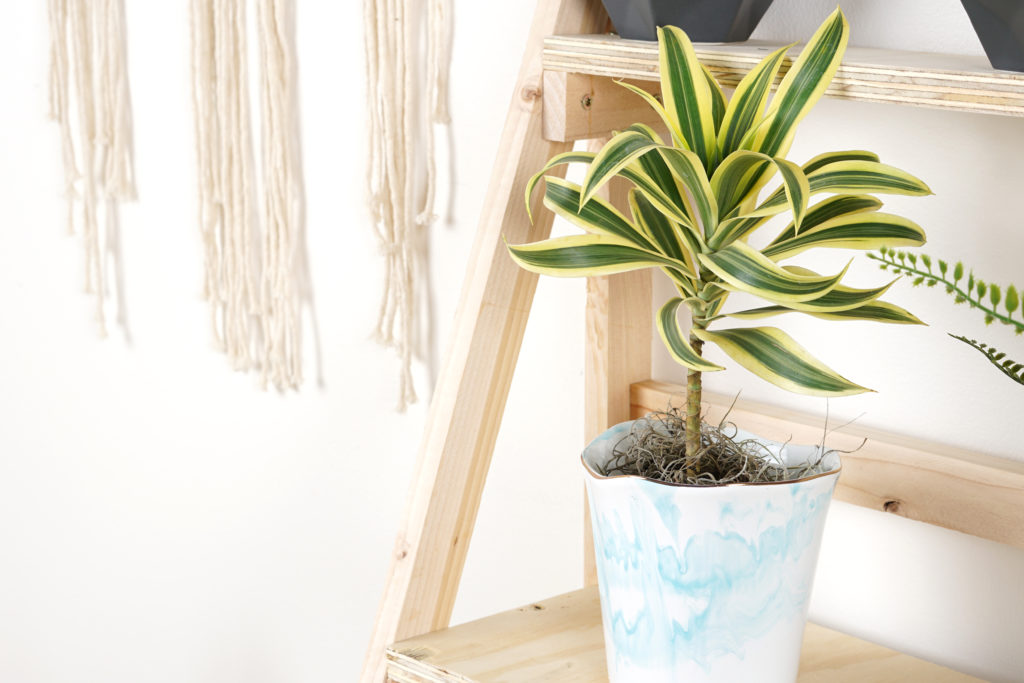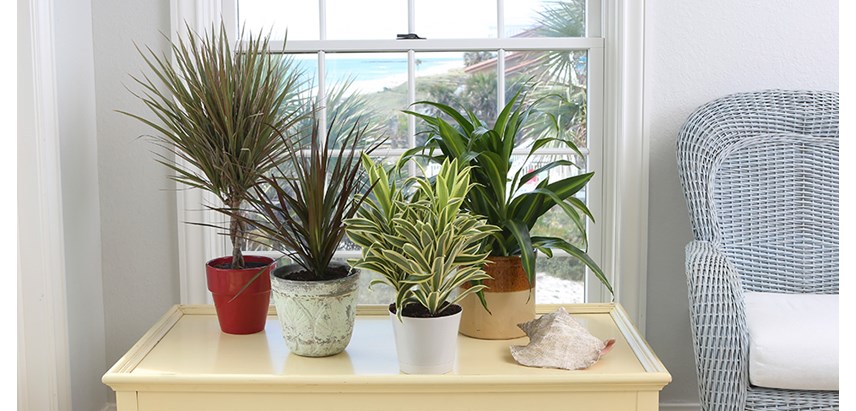Dracaena Plant - Types, Care, Propagation and Diseases
When talking about a dracaena plant, most people think about the most popular type - marginata. Grown in a container, it can reach a significant size. What's more, it's incredibly easy to take care of. Depending on the provided conditions and the way it's managed, you can get a branched or non-branched form. Check what you should know about this plant before you buy it.

Dracaena - what kind of plant is it?
Dracaena is a plant originating on Madagascar, where it grows up to 4-5 meters, which is quite impressive. At home, though, these plants are much smaller - they reach maximally 2 meters, although typically, they measure 150 centimeters.
Dracaena blooms only in its natural habitat, but sometimes a plant kept indoors blossoms as well. But note that it happens rarely. When a dracaena blooms, it develops characteristic small flowers with an intense smell.

Discover the most popular dracaena types
There are at least a few dozen types of dracaena. But Dracaena marginata is definitely the most popular one. One popular method for distinguishing dracaena types involves dividing them according to colors.
- Bicolor - it’s a plant with characteristic yellow leaf edges.
- Tricolor has cream stripes on the leaves, which have red edges.
- Colorama has green-red-pink leaves.
Dracaena care - how to care for a dracaena?
A dracaena is an easy plant to take care of, and anyone should be able to manage it, even without prior experience. Dracaenas don’t need frequent watering, so even a longer time without water is not a big deal for them.
Regardless of the type, every dracaena plant needs the same treatment. Water it at least once every 1-2 weeks - this period can be longer in winter. Too much water might damage the plant. Only dracaena Sandera tolerates water standing in its saucer.
Dracaena care involves other issues as well, such as picking the right soil and container, and following certain rules. Although it’s not a delicate plant, too many mistakes in a short time might hinder its growth - and make it shrivel or rot.

What is the best soil for a dracaena?
Dracaenas prefer fertile and permeable soil. The substrate in the container should be slightly acidic. You can purchase a special soil mix for dracaenas in a gardening center or a flower shop - it’s a commonly available product.
More experienced plant lovers can decide to create their own dracaena potting mix. It requires combining a few ingredients.
A plant stores water inside, so watering a dracaena once every week or two weeks is enough. If you tend to forget about watering houseplants, and cacti are not your cup of tea - perhaps dracaena is perfect for you.

How to find the best pot for a dracaena plant?
A container for a dracaena should be tall - this plant grows many roots and requires plenty of space for them. Palm pots are the best choice - they are large and solid, which make perfect conditions for the plant to grow.
Keep in mind, though, that one container is not enough for many years of keeping a dracaena plant at home. That’s why there’s no point in picking a huge pot for a small dracaena.
Pruning a dracaena - is it necessary and how to do it?
Experts recommend trimming dracaena plants. Thanks to it, the plant looks and grows better. You should prune the sprigs in spring. Make sure to do it correctly, otherwise, you might damage the plant.
Dracaena propagation - how to do it?
Propagating a dracaena is simple. Just use stem cuttings. This method is not only the easiest, but also the simplest. It’s often used when a dracaena grows too tall and requires trimming.
How to repot a dracaena?
A dracaena plant should be transplanted every two or three years, if the plant is young - because it grows quickly.
If the plant is old, repotting is not necessary, considering the tradition of plant keeping. All you have to do is replace the top layer of the soil from time to time.

Dracaena diseases - what are the major threats?
One can distinguish a few most common dracaena diseases. The plant is vulnerable to diseases cause by improper watering and fertilizing. The most common problem when there’s too much water is root rot.
Brown spots on dracaena leaves are a sign of a wrong position of the plant - it has too much sunlight, hence the issues with leaves. Just change its location to resolve the problem. Not that regeneration takes some time.
Diseases are not the only dangers looming over dracaenas. Pests like mealybugs find the leaves a great place to live. That’s why they should be eliminated as soon as possible. Use special products for this purpose - you can find them in gardening stores.
Where to buy a dracaena?
You can purchase a dracaena plant in most flower stores, as well as supermarkets with a gardening aisle. These plants are popular enough to appear on auction websites as well. If you pick this source, make sure to check opinions on the sellers and choose trusted ones only. This way, you can be sure the purchased plant isn’t sick and bears no pests which could spread onto other plants in your house.
How much does a dracaena cost?
The price of a dracaena depends on a few factors. The type of the plants and unique leaves are important elements. The size in another parameter - smaller plants are far cheaper. Large dracaenas cost even $125.

📍 What is a dracaena plant?
There are nearly 40 different dracaena types. Dracaena flowers are the most characteristic feature of this plant - they have a strong and characteristic smell. Dracaena marginata is the most popular type of dracaenas grown indoors.
📍 What is the best soil for a dracaena?
Growing a dracaena indoors is not problematic, but remember about the right soil. Dracaenas prefer slightly acidic soils - permeable and fertile. You can buy a special mix for dracaenas in a store, or make it yourself.
📍 Are dracaenas difficult to grow?
Dracaena is a beautiful and very ornamental plant. Note it's perfect for anyone, even those who aren't skilled at taking care of plants. You don't have to remember to water a dracaena regularly. The plant stores water, so lack of water won't harm it.
📍 How much do dracaenas cost?
The price of a plant depends on various factors. Size is the most important one. The simplest dracaenas cost around $15. But some specimens cost $150 and more.
Featured articles




